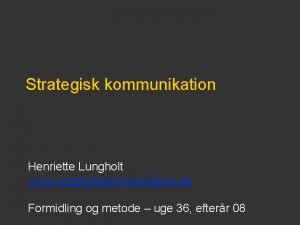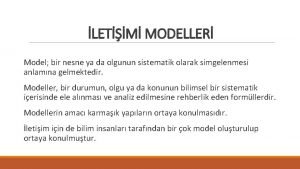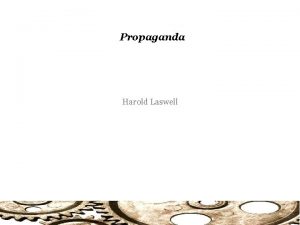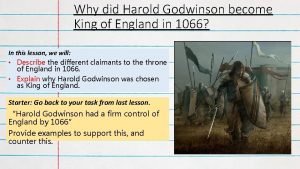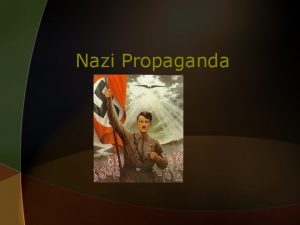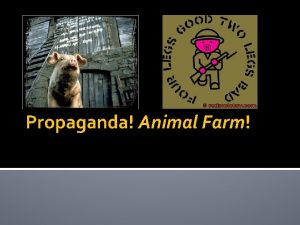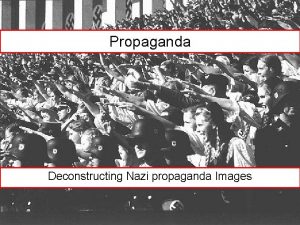Propaganda Harold Laswell Propaganda What is Propaganda Laswell








- Slides: 8

Propaganda Harold Laswell

Propaganda What is Propaganda? Laswell defines it as “the technique of influencing human action by the manipulation of representations. ” Shaping Dispositions It is, he continues, the process through “which value dispositions (hatred, or love) are organized. ” By Contrast: Education 1) Learning a technical skill (such as the ability to critically analyze information. 2) Inculcation of Value

Propaganda History of Propaganda has a long history: Pompeii: Walls covered in electoral propaganda Frederick the Great: Sought to shape public opinion Napoleon: Supported a friendly British newspaper American Revolution: Committees of Correspondence Red Cross, WWI: Targeted Bolshevik government in Russia

Propaganda Types of Propaganda Intergroup: International Propaganda across borders 1) Positive Example: Friends of the Soviet Union 2) Negative Example: German, British WWI Disinformation campaigns in the US

Propaganda Types of Propaganda Intragroup: Domestic (Internal) Propaganda within countries borders Types of Intragroup Propaganda 1) Unity or Disunity 2) Revolutionary or Counter-Revolutionary

Propaganda and Democracy (17) According to Laswell, the military was the first to see that the rise of Democratic rhetoric poses problems for those interested in “eliciting concerted action. ” “When lords fall out, commoners come into their own. ” War: Need for Collective Action War depends on mass mobilization. To create needed public support, political leaders who could no longer rely on obedience, sought to use nationalist concepts.

Propaganda Strategy The objective is to: 1) Intensify favorable attitudes 2) Reverse obstructionist attitudes 3) To win the indifferent 4) minimize opposition

Propaganda Techniques Use of Social Objects and Culture The success of a propaganda is tested by the selection of modes of representing a social object that will accomplish his ends. Modes Shaped by Culture Preexisting culture determines the emotional and cognitive terrain of propaganda.


